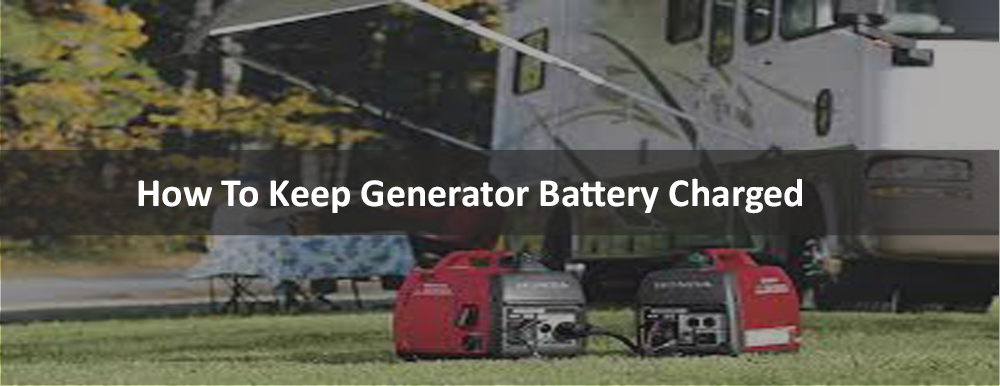Post Disclaimer
101 Generator is supported by its audience. When you purchase through links on our site, we may earn an affiliate commission. Learn more

How To Keep Generator Battery Charged
Power outages are a common phenomenon in the modern world, particularly in areas where natural calamities are likely.
For instance, hurricane-prevalent areas normally face long power outages each day and several times a day due to weather alerts and preventive measures.
Similarly, in winter many cold areas see unlimited power outages and it makes the lives of people living there unbearable.
In this advanced tech world having the power supply cut even for a day is something impossible to endure and that’s why power backup sources have become the ultimate necessity.
These backup power sources allow you to break free of your dependence on the grid power and enjoy your normal life as you were doing before the power breakdown.
Generators are the most typical backup power source and one may need them from time to time even without power outages such as that on recreational trips and tailgate parties.
Generators are also the primary power source in RVs, camping sites, and outdoor areas where the grid power supply is inaccessible.
Using a generator for power backup or even the primary power source is not a very tiring task but you need to know certain technical requirements that will make the process goes smoothly.
One such requirement is to know how to connect a portable generator to a house without a transfer switch.
If you don’t know about connecting your generator to your house power supply line without using the transfer switch then we suggest you read our review to clear your doubts and ambiguities.
How To Connect Portable Generator To House Without Transfer Switch?
Step 1:
The first and foremost requirement for using a generator is to create a power outlet that will act as the switch to pass the power and run it through the main supply lines.
You should select a preferred location where you want to have your generator outlet and then create a utility box for it.
To do so, you would have to create a rectangular hole equal to the size of your generator outlet. To create the hole in the wall (wood or drywall) you can make use of the oscillating tools.
If you don’t have the oscillating tools you can use the drill for creating the hole. A drill is best for cement and concrete walls and oscillating tools won’t be of any help on concrete walls.
Step 2:
Inside the outlet box, create a hole big enough to accommodate your wires and cables running from the generator to the outlet and outside the house.
You should fix the diameter of the hole bigger than the diameter of the wires to let them pass through the hole easily.
Step 3:
To provide extra safety and protection to your outlet kit, you can install a waterproof box right above your outlet on the wall. This waterproof box will protect the end plug.
This waterproof box can be easily bought from the market as you can get a sigma electric box that will cover the end plug and protect it against possible damage.
You should buy a box bigger than the size of your outlet kit as you would have to cover it with the safety box.
Step 4:
Now, that you have completed the safety requirements, it is time to connect your wires to the kit and make the connection complete.
For that purpose, you would have to insert the free end (not connected to generator outlets) inside the outlet kit and plug them outside the house.
Now assemble the wires and outlet kit from inside the box. To assemble the wires and outlet, you would need a sealant that will seal the home from the interior and exterior and no wires will come through it. This will give insulation and waterproofing to the outlet kit.
Step 5:
Now your outlet plug is ready and you can simply hook the generator inlet plug inside the outlet kit on the wall. Both terminals will be connected and the circuit will be completed.
Once the inlet plug is inserted, you can install a power consumption tester that will give you a display of how many watts your connected appliances are using.
You can test run this connection by inserting the inlet plug and testing how many appliances are being run on the generator power.
Conclusion:
Related Articles:
- Where Are Predator Generators Made?
- Southwire Extension Cord Review
- Best Extension Cord for Pool Pump
